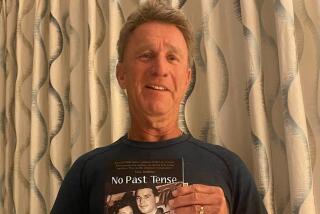TO GIVE THEM LIGHT: The Legacy of Roman Vishniac, <i> edited by Marian Wiesel (Simon & Schuster: $40; 158 pp.).</i>
- Share via
Few photographers so embody their subject matter that the mention of their name calls up an entire culture. Walker Evans and Dorothea Lang mean Depression-era America, Jacques-Henri Lartigue recalls turn of the century France, and Roman Vishniac has become inextricably linked with a world that is no more, the thriving civilization of Eastern European Jewish life that ended with the Second World War.
Vishniac spent the years between 1934 and 1939 traveling and photographing in Poland, Hungary, Slovakia and the Carpathians, first on assignment by a charitable organization, then because the task came to obsess him. He made some 16,000 images, only a fraction of which survived the inferno that Vishniac could sense was coming.
Almost all taken without the subject’s knowledge, these photographs represent, in Vishniac’s words, “reality completely unposed.” Struggling to make a living or rushing off to prayer, Vishniac’s subjects project an inner kind of dignity and an innate sadness, as if they knew without knowing that their end was near. All except the children, who possess a joy that reality wasn’t fated to support.
There have been other book-length studies of Vishniac’s work, the most lavish of which is “A Vanished World” (1983). But this is the only one to divide his photography into geographic segments and to show the variety of Jewish experience, from the rural bleakness of Carpathian Ruthenia to the chaotic urban slums of Warsaw, Cracow and Lodz. “My means were meager,” Vishniac truly said, “but my will was unbreakable.”
More to Read
Sign up for our Book Club newsletter
Get the latest news, events and more from the Los Angeles Times Book Club, and help us get L.A. reading and talking.
You may occasionally receive promotional content from the Los Angeles Times.








